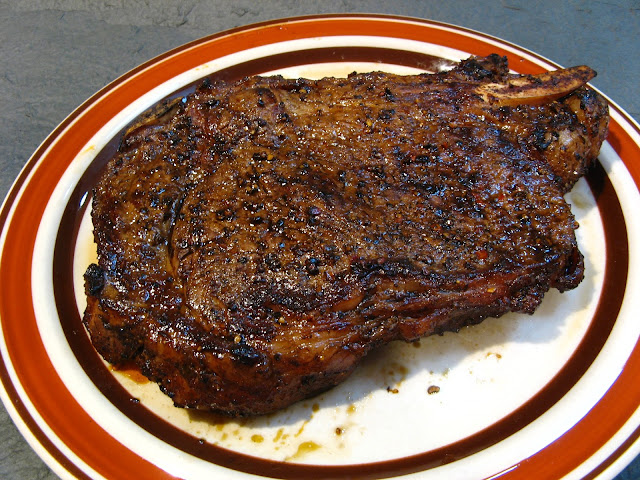With this recipe, I’m introducing a new type of meal. You’ll
notice that the title of this recipe is prefaced with, “Single Meal”. Most of
my previous recipe postings were for four or more servings per recipe, which is
great if you’re cooking for a family or cooking enough to have leftovers for
the week. Whenever you see, “Single Meal”, in the recipe title, the portion has
been reduced to produce one or two meals, so the name is a bit of a misnomer
since it really is more than a one meal recipe. The idea here is to produce
recipes, for instance, for a lunch or dinner with enough leftovers for another
meal. The meals can be scaled up to produce larger portions, usually by increasing
the ingredients and/or sauce amounts.
For this recipe, there was a predecessor: Shrimp
Dough Sliced Chow Mein (蝦炒刀削麵, Haa1 Caau2
Dou1 Soek3 Min6), which used frozen dough
sliced noodles. I first got introduced to this dish at the local Chinese Muslim
restaurant. Ordering this dish and green onion bread makes for a great meal.
Dough sliced noodles are aptly named since the noodles are sliced from a block
of dough. The noodles have a chewy doughy texture, unlike normal chow mein
noodles.
This recipe uses dried knife cut noodles (which is just
another name for the same noodles). The good news when using dried noodles is
that there’s no overnight thawing required to use the noodles (although they
still must be rehydrated). The bad news about these noodles is that my local Asian
market had the noodles on closeout, so once I run out, that’s it unless I find
a replacement brand. Luckily I bought enough of the dried knife cut noodles to
last a while, so hopefully another brand will become available in the meantime.
Your local Asian market might stock these noodles, so you might not have the
same problem.
Rehydrating the dried noodles is easy. All you need is a
covered container, boiling water, the dried noodles, and a microwave oven. All
you need to do is to pour boiling water over the dried noodles in a covered
container. Place the container into a microwave oven and microwave on high for about
3-4 minutes, until the noodles boil for about 30-60 seconds. The strength of
your microwave and the thickness of the dried noodles will dictate the amount
of time needed to rehydrate the noodles in the microwave, so you’ll have to
experiment to find the time needed microwaving. The noodles should be al dente,
in fact they should seem a little undercooked. Stir frying the noodles in a wok
later will complete cooking.
Enjoy!

















